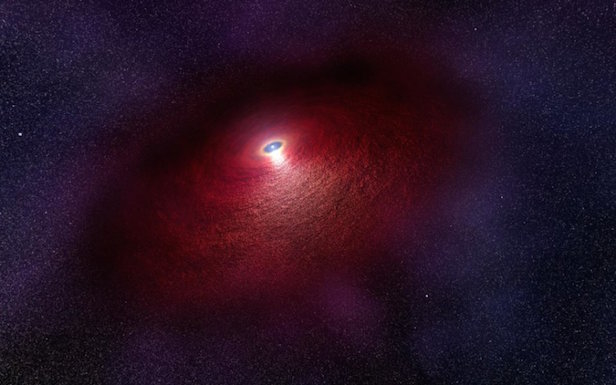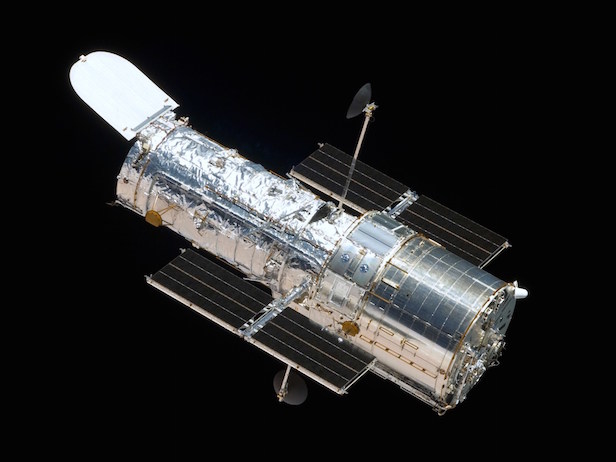Oddball features spotted around neutron star for the first time
The observation could help astronomers better understand the evolution of these collapsed stellar cores

This illustration shows a neutron star (RX J0806.4-4123) with a disc of warm dust that produces an infrared signature as detected by NASA’s Hubble Space Telescope. Image credit: Nahks Tr’Ehnl, Penn State
An unusual infrared emission detected by the Hubble Space Telescope from a nearby neutron star could indicate that the pulsar has features never before seen. The observation, by a team of researchers at Penn State, Sabanci University in Turkey, and the University of Arizona, could help astronomers better understand the evolution of neutron stars – the incredibly dense remnants of massive stars after a supernova. A paper describing the research and two possible explanations for the unusual finding appears on 17 September 2018, in the Astrophysical Journal.
“This particular neutron star belongs to a group of seven nearby X-ray pulsars – nicknamed ‘the Magnificent Seven’ – that are hotter than they ought to be considering their ages and available energy reservoir provided by the loss of rotation energy,” said Bettina Posselt, associate research professor of astronomy and astrophysics at Penn State and the lead author of the paper. “We observed an extended area of infrared emissions around this neutron star – named RX J0806.4-4123 – the total size of which translates into about 200 astronomical units (or 2.5 times the orbit of Pluto around the Sun) at the assumed distance of the pulsar.”
This is the first neutron star in which an extended emission has been seen only in the infrared. The researchers suggest two possibilities that could explain the extended infrared emission seen by the Hubble Space Telescope. The first is that there is a disk of material – possibly mostly dust – surrounding the pulsar.
“One theory is that there could be what is known as a ‘fallback disk’ of material that coalesced around the neutron star after the supernova,” said Posselt. “Such a disc would be composed of matter from the progenitor massive star. Its subsequent interaction with the neutron star could have heated the pulsar and slowed its rotation. If confirmed as a supernova fallback disc, this result could change our general understanding of neutron star evolution.”
The second possible explanation for the extended infrared emission from this neutron star is a “pulsar wind nebula.”
“A pulsar wind nebula would require that the neutron star exhibits a pulsar wind,” said Posselt. “A pulsar wind can be produced when particles are accelerated in the electric field that is produced by the fast rotation of a neutron star with a strong magnetic field. As the neutron star travels through the interstellar medium at greater than the speed of sound, a shock can form where the interstellar medium and the pulsar wind interact. The shocked particles would then radiate synchrotron emission, causing the extended infrared emission that we see. Typically, pulsar wind nebulae are seen in X-rays and an infrared-only pulsar wind nebula would be very unusual and exciting.”
Although neutron stars are generally studied in radio and high-energy emissions, such as X-rays, this study demonstrates that new and interesting information about neutron stars can also be gained by studying them in the infrared. Using the new NASA James Webb Space Telescope, due to launch in 2021, astronomers will be able to further explore this newly opened discovery space in the infrared to better understand neutron star evolution.
Keep up to date with the latest news in All About Space – available every month for just £4.99. Alternatively you can subscribe here for a fraction of the price!





